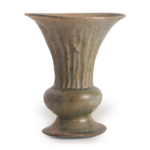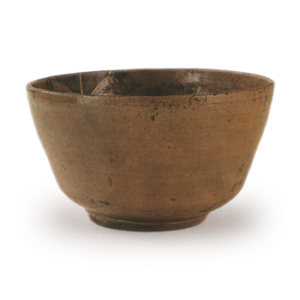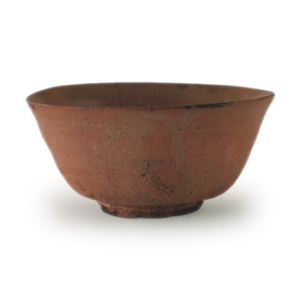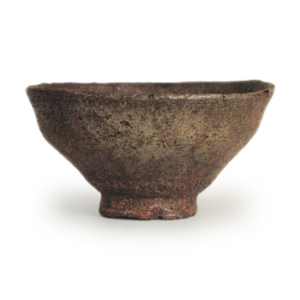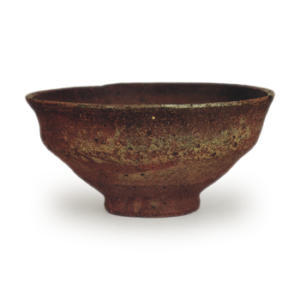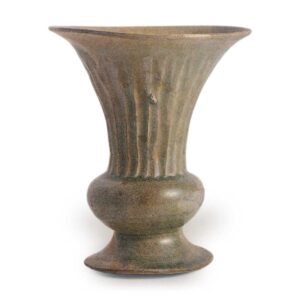
Excavated from Tonan Kiln, Higashiyamanaka-cho, Seto City, Aichi Prefecture, Japan
15th century
Height 18.0 cm, mouth diameter 14.9 cm, body diameter 8.5 cm, bottom diameter 9.4 cm
In the Muromachi period (1336-1573), Kosedo Buddhist vases were replaced by so-called “Son-shiki” Buddhist vases. This form, with its wide mouth, trumpet-shaped mouthpiece, and low base, was not a transition from the previous period, but a new appearance in the Muromachi period. Although it is called by this name after the ancient Chinese bronze vases of the zun style, it is probably a copy of the Yuan-Ming style. There are two types of Zun-style vases: those with narrow orifices and those with remarkably thick, wide mouths. The two-lobed vase usually does not have a binaural ring.
This vase is made of fine grayish-white clay and is water-glazed with a thick rounded carved design on the mouth. The ash glaze is applied to the entire surface except for a portion of the base, and is also applied to the inner surface of the oral part up to the joints of the joints. The glaze is uniform over the entire surface and has a beautiful light green color. This vase is one of the best examples of the early Zon-Style Buddhist vases.

